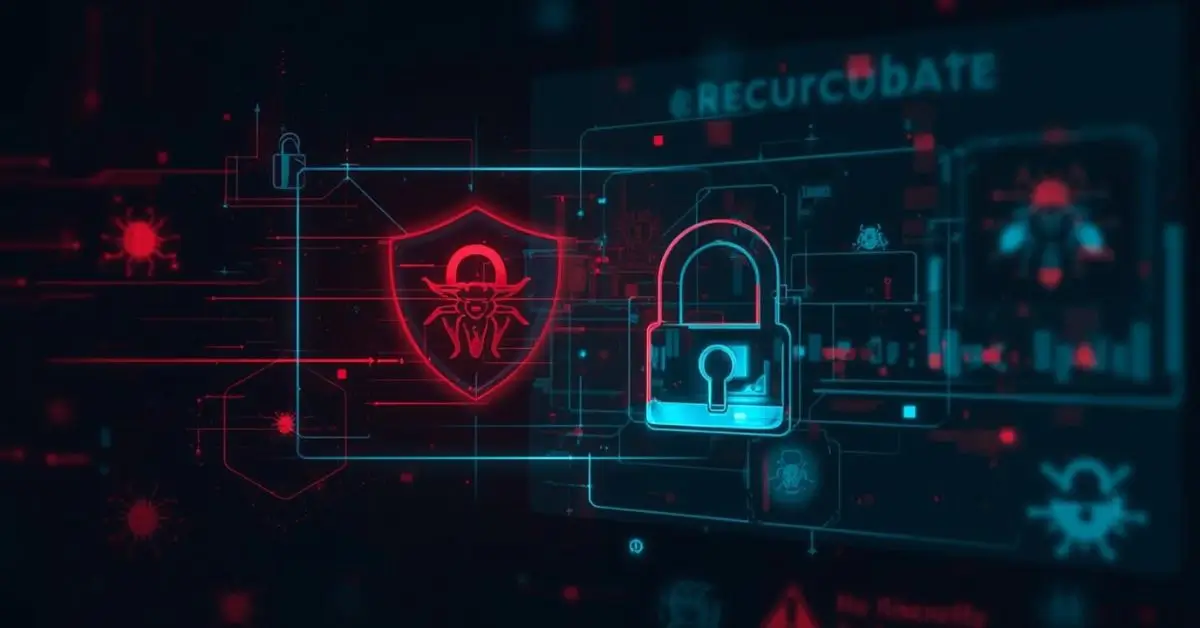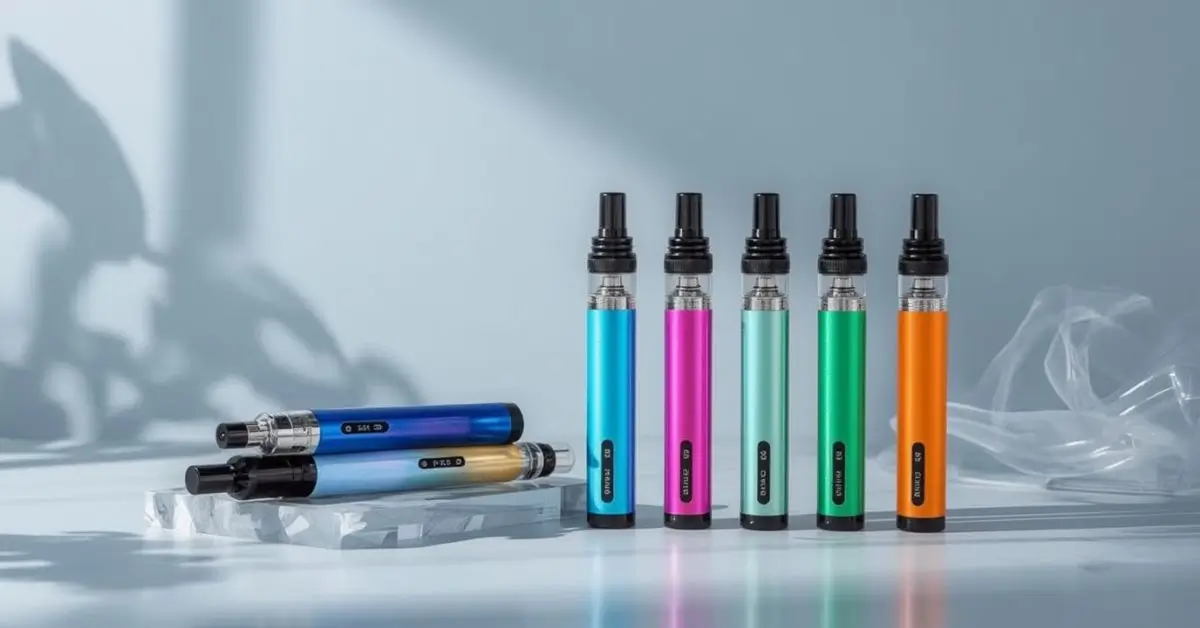BLOG
Black Spots on Laptop Screen: What They Mean

Black Spots on Laptop Screen Black spots are usually indicative of LCD damage, pixel failure, or pressure-induced injuries beneath the surface of the screen. A common misconception is that these marks are dirt or surface smudges, but more often than not, they’re the result of internal screen issues. On LED or LCD displays, even minor faults within the liquid crystal layer or the transistor grid can disrupt image rendering, leaving behind unresponsive black areas.
Sometimes, these spots may appear after an accidental drop, excess pressure from closing the lid with an object inside, or from prolonged exposure to high temperatures. In other cases, they may stem from manufacturing defects, particularly in cheaper or older screens.
Dead Pixels vs. Stuck Pixels: A Crucial Difference
One of the first steps in diagnosing black spots involves determining whether you’re dealing with dead pixels or stuck pixels. A dead pixel is a pixel that no longer receives power and appears permanently black. These often cluster and form noticeable patches, especially on dark backgrounds. On the other hand, a stuck pixel may be colored red, green, or blue and might appear as a bright dot rather than a black one.
Dead pixels are generally unfixable without professional intervention or complete screen replacement. In contrast, stuck pixels can sometimes be resolved using software tools or screen massage techniques, though results may vary.
Causes Behind the Appearance of Black Spots
There are several root causes behind the development of black spots on a laptop screen, including:
-
Physical damage: Impact or excessive pressure may rupture the internal layers of the screen.
-
Manufacturing defects: In some cases, faults develop within the display panel during production.
-
Aging hardware: Over time, screens deteriorate, especially if the laptop is subjected to frequent use or environmental stress.
-
Thermal stress: Overheating can lead to pixel burnout or expansion of liquid crystal molecules, causing blotchy dark areas.
-
Moisture ingress: If water or humidity infiltrates the display, it may affect internal circuits or damage the display matrix.
Diagnosing Black Spots at Home Black Spots on Laptop Screen
Before rushing to a technician, you can perform a few simple checks:
-
Display a solid white or black background: This helps in clearly identifying the size, location, and nature of the black spots.
-
Use pixel-checking software: Tools like Dead Pixel Buddy or JScreenFix help in distinguishing dead from stuck pixels.
-
Apply gentle pressure: For minor issues like pressure spots or stuck pixels, lightly massaging the area may offer temporary improvement.
-
Connect to an external monitor: If the black spots don’t appear on the external display, the issue is limited to your laptop’s screen.
Keep in mind, attempting self-repair methods carries risks. Improper pressure or screen manipulation can worsen the damage.
How to Fix or Minimize the Impact Black Spots on Laptop Screen
Professional Repair or Screen Replacement
If the black spots are expanding or result from broken LCD layers, a screen replacement is the most reliable solution. Depending on the brand and model, this could range from affordable to costly. Major brands like HP, Dell, Lenovo, or Apple often offer support or warranty options that may cover screen defects.
Software Solutions
For stuck pixels, running pixel-fixing software that flashes RGB patterns rapidly over the screen may stimulate pixels back into function. These aren’t guaranteed fixes but are worth trying before resorting to hardware repair.
Preventative Measures
To avoid future occurrences:
-
Avoid placing heavy objects on the laptop lid.
-
Keep your laptop in a padded bag during travel.
-
Clean your screen regularly with a microfiber cloth and screen-safe cleaner.
-
Monitor your device’s temperature and prevent overheating.
When Should You Be Concerned?
While a single dead pixel may not significantly affect performance, multiple black spots or spreading blotches may interfere with screen readability and user experience. If you’re a graphic designer, video editor, or professional relying on display accuracy, even minor screen defects can compromise your work.
It’s also worth noting that some manufacturers have a dead pixel policy, where a certain number of dead pixels must be present before a screen qualifies for replacement. Always check your warranty terms or customer service policies.
FAQs: Black Spots on Laptop Screen
Q1: Can black spots on my laptop screen disappear on their own?
In rare cases, if the issue is due to a stuck pixel or temporary pressure, it might resolve itself. However, dead pixels or LCD damage typically do not heal.
Q2: Is it safe to continue using a screen with black spots?
Yes, in most cases. However, if the spots are growing or interfering with visibility, you should consider repair or replacement.
Q3: How much does it cost to fix black spots on a laptop screen?
Depending on the model and extent of the damage, screen replacement can range from $50 to $300 or more. Always get a quote before committing.
Q4: Can software really fix black spots?
Only stuck pixels may respond to software-based solutions. Dead pixels and pressure spots cannot be fixed by software.
Q5: Will factory resetting my laptop remove the black spots?
No. Since black spots are a physical issue, software changes like a reset or reinstalling the OS won’t have any effect.
Conclusion
Black spots on a laptop screen are more than just an eyesore—they’re a sign that something within the display is malfunctioning. Whether it’s a cluster of dead pixels, a patch caused by pressure, or damage from an accidental drop, it’s essential to assess the situation carefully. With early diagnosis, appropriate tools, and preventive care, you can manage or even avoid future screen issues.
BLOG
Is Recurbate Safe for Users or a Hidden Risk?

The question “is Recurbate safe” pops up often in online discussions. If you’ve heard of the site, you probably know it’s popular for recording and downloading cam shows. But with increasing concerns about privacy, legality, and cybersecurity in 2025, many users are right to ask: is it really safe to use? Or does it put your data, your device, and even your legal standing at risk?
Recurbate Review: What the Platform Offers
At its core, Recurbate is a website that lets users record or replay live cam shows from popular adult platforms. The draw is simple—users can access content after it has aired, which isn’t normally possible on official platforms.
Supporters argue that the site’s convenience is unmatched. But detractors highlight Recurbate security issues and ethical concerns, especially around consent and copyright.
One user mentioned on a forum:
“I used Recurbate for a few weeks. It was cool at first, but then I got paranoid about viruses and whether it was even legal. Deleted everything after that.”
This real-life feedback reflects the mixed experiences people have when they experiment with Recurbate.
Recurbate Legality: A Grey Zone in 2025
One of the biggest questions people ask is about Recurbate legality. The short answer? It depends on where you live.
- Copyright Law: Many shows on cam platforms are copyrighted by the performer or the site. Downloading or redistributing them without permission can be considered copyright infringement.
- Privacy Law: In some jurisdictions, recording someone without consent—even in an online context—may breach privacy rights.
- User Liability: While law enforcement doesn’t target casual users often, there have been cases where large-scale distributors faced legal action.
So, if you’re asking is Recurbate legit, the answer is complicated. The site itself doesn’t operate openly as a legal service, which means users are operating in risky legal waters.
Recurbate Virus Risk: Should You Be Worried?
Cybersecurity should be your number one concern. Sites like Recurbate often raise red flags for potential malware and phishing attempts.
- Pop-Ups and Ads: Many users report intrusive ads, some of which redirect to suspicious domains.
- File Downloads: Recorded videos may come with hidden malware if downloaded from unverified sources.
- Data Theft: Logging into fake Recurbate mirrors could expose your email or password.
When analyzing Recurbate virus risk, cybersecurity experts often categorize it as high. In 2025, with the rise of AI-powered phishing, even tech-savvy users can fall victim.
Recurbate Malware Safety: How Secure Is It Really?
Some users wonder if they can protect themselves with VPNs, antivirus, or private browsing. While these tools help, they don’t guarantee Recurbate malware safety.
- Antivirus may block known threats, but new malware variants slip through.
- VPNs hide your IP address, but they don’t protect your device from infected files.
- Ad-blockers can reduce pop-ups, but some scripts bypass them.
In short: you can reduce risks, but you can’t eliminate them completely if you’re accessing questionable sites.
Is Recurbate Legit in 2025?
When people search is Recurbate legit, they’re usually asking if it’s safe, trustworthy, and legal.
Here’s the truth:
- Safety: Questionable, due to malware risks.
- Trustworthiness: Low, since it operates in a legal grey area and doesn’t have transparent ownership.
- Legitimacy: No major cam platforms endorse it, which says a lot.
So, while it may function as advertised, it’s far from “legit” in the sense of being reliable or risk-free.
Recurbate Security Issues: What Experts Found
In cybersecurity audits done on adult-streaming-related domains, researchers flagged:
- Outdated SSL certificates on clone sites.
- Data harvesting trackers embedded in scripts.
- Third-party redirects that led to scam offers.
These Recurbate security issues are why even seasoned tech users warn beginners not to take chances.
Recurbate Trustworthiness: Should You Rely on It?
If a site asks for clicks, downloads, and doesn’t disclose its owners—would you call it trustworthy? Probably not.
Recurbate trustworthiness scores low because:
- It lacks official customer support.
- Its reputation is mixed in user reviews.
- Alternatives exist that don’t carry the same risks.
Ultimately, trust is built on transparency, and Recurbate doesn’t provide much of it.
Recurbate User Reviews: Real Experiences
Online Recurbate user reviews are split:
- Positive: Some say the recordings are convenient, and they didn’t face problems.
- Negative: Others report viruses, stolen accounts, or ethical guilt.
For example, one Reddit user shared:
“I tried it once, got hit with endless pop-ups, and my browser started acting weird. Not worth it.”
This mirrors the reality: user satisfaction varies, but the risks remain constant.
Safe Cam Recording Sites: Legal Alternatives
If you’re looking for safe cam recording sites, your best bet is to stick to official platforms. Many now offer replay options or subscription models that allow access to past shows.
Safer Alternatives to Recurbate
- Chaturbate Replay Extensions: Officially supported by third parties with proper permissions.
- ManyVids & FanCentro: Performers upload their own content for resale, fully legal.
- OnlyFans: Pay-per-view and subscription-based archives.
Choosing these Recurbate alternatives ensures performers are compensated and users avoid legal or malware trouble.
Pros and Cons of Using Recurbate
Pros
- Free access to recorded cam shows
- Easy to use without sign-ups
- Large selection of content
Cons
- High malware and virus risks
- Legal grey area (copyright and privacy violations)
- Low trustworthiness due to shady practices
- Ethical concerns around performer consent
Expert Tips for Safer Browsing
If you still decide to explore, here are best practices (though not full-proof):
- Use a strong antivirus and keep it updated.
- Always browse with a VPN.
- Avoid clicking ads or pop-ups.
- Don’t reuse passwords—especially not work or email ones.
- Consider safer Recurbate alternatives instead.
FAQ’s
No. Without a VPN, your IP address is exposed, and malware risks remain.
Yes, the Recurbate virus risk is significant due to suspicious downloads and pop-ups.
It depends on your jurisdiction, but in most cases, recording copyrighted shows without consent is not legal.
Platforms like ManyVids, OnlyFans, and FanCentro provide legal access to archived content, unlike Recurbate.
Final Thoughts
So, back to the big question: is Recurbate safe? The evidence points to no. Between Recurbate legality issues, malware safety concerns, and low trustworthiness, the risks outweigh the rewards.
BLOG
Jones MyGreenBucks Net: Easy Payroll Access Guide

At its core, Jones MyGreenBucks Net is a secure employee self-service system designed to handle payroll, HR, and benefit management in one place. Think of it as a digital filing cabinet where you can:
- View and download pay stubs
- Update your MyGreenBucks employee account details
- Access W-2s and tax forms
- Check direct deposit status
- Review benefits enrollment and changes
- Communicate with HR securely
Unlike older systems that required multiple logins, the Jones company payroll portal combines everything into a single secure platform.
Why Employees Depend on Jones MyGreenBucks Net
The transition to digital payroll systems was accelerated by remote work trends and cost-saving strategies. Employees now expect quick access to documents without having to email HR or wait for paper checks.
A warehouse associate shared on social media:
“Finally figured out my Jones MyGreenBucks login and got my pay stub in under two minutes. Way easier than waiting for HR to email me back.”
This type of feedback shows how the portal reduces friction between employees and payroll teams, making it an essential tool for workplace efficiency in 2025.
Key Features of the Jones MyGreenBucks Portal
The Jones MyGreenBucks portal offers a suite of features that go beyond basic payroll. Here’s a breakdown of what employees can expect:
Payroll Access
- Jones payroll online makes it easy to view paychecks, deductions, and tax withholdings.
- Employees can download a Jones net pay stub instantly, useful for loan applications, rental agreements, or tax filing.
Employee Benefits
- Through the Jones employee benefits login, staff can review healthcare plans, dental coverage, and retirement contributions.
- Annual enrollment and benefits updates are managed directly in the portal, eliminating paperwork.
HR Support
- The MyGreenBucks Jones HR portal connects workers to HR resources, including PTO requests, policy documents, and performance evaluations.
- Employees can securely message HR without leaving the system.
Security and Compliance
- With MyGreenBucks secure access, accounts use multi-factor authentication to safeguard personal information.
- The system aligns with federal compliance laws, ensuring payroll and tax records remain protected.
Step-by-Step Guide: MyGreenBucks Jones Login
Accessing the portal is straightforward, but new users often need a little guidance. Here’s how to log in:
- Visit the official Jones MyGreenBucks Net login page.
- Enter your username or employee ID.
- Input your password (case-sensitive).
- Complete the multi-factor authentication step if prompted.
- Click “Login” to access your dashboard.
Pro Tip: If you’re logging in for the first time, you’ll likely need to create or reset your password using your employee number and the instructions provided by HR.
Troubleshooting Common Login Issues
Sometimes, employees face challenges when trying to log in. Here’s how to solve them:
- Forgot Password: Use the “Forgot Password” option on the Jones MyGreenBucks portal to reset it.
- Account Locked: Too many failed attempts will lock your account. Contact HR or IT to reset access.
- Browser Issues: The portal works best on Chrome or Edge. Clear cache if the site doesn’t load.
- Two-Factor Issues: Make sure your mobile number or email on file is correct to receive login codes.
How to Access Your Jones Net Pay Stub Online
One of the most used features of Jones MyGreenBucks Net is downloading pay stubs. Here’s the process:
- Log in through your MyGreenBucks employee account.
- Navigate to the “Payroll” or “Pay History” tab.
- Select the pay period you want to review.
- Download the MyGreenBucks pay stub online in PDF format.
Employees often rely on this function when applying for credit, verifying income, or resolving paycheck discrepancies.
Managing Benefits Through the Jones Employee Benefits Login
The Jones employee benefits login allows workers to manage more than just healthcare plans. In 2025, employees expect flexible options, and this portal delivers:
- Health & Dental Insurance: Compare coverage options and update dependents.
- Retirement Plans: Adjust 401(k) contributions in real time.
- Wellness Programs: Access mental health resources, fitness reimbursements, and more.
This centralized benefits management saves time and ensures compliance with enrollment deadlines.
The Importance of MyGreenBucks Secure Access
With cyber threats on the rise, employees often worry about whether payroll platforms are safe. The MyGreenBucks secure access system uses:
- End-to-end encryption
- Multi-factor authentication
- Regular compliance audits
- Role-based permissions
These measures ensure that only authorized users can view sensitive payroll or HR information.
Comparing Jones MyGreenBucks Net to Other Payroll Systems
| Feature | Jones MyGreenBucks Net | Legacy Payroll Systems | Other Online Portals |
|---|---|---|---|
| Pay Stub Access | Instant PDF downloads | HR request required | Varies by provider |
| Employee Benefits Integration | Yes, built-in | Separate platform | Sometimes available |
| HR Communication | Secure portal messaging | Email/phone only | Limited |
| Security (MFA + encryption) | Strong | Basic login only | Moderate |
| User Experience | Mobile-friendly | Desktop only | Depends on provider |
The table makes it clear: employees benefit from convenience and enhanced security when using Jones MyGreenBucks Net compared to older payroll systems.
Real-Life Example: Payroll Made Simple
Take the case of Maria, a new retail associate. On her first payday, she worried about how to access her wages. Instead of waiting for HR, she logged into the Jones MyGreenBucks portal, set up her MyGreenBucks employee account, and downloaded her Jones net pay stub within minutes.
Her experience highlights the platform’s value: immediate, reliable access without unnecessary delays.
Pros and Cons of Using Jones MyGreenBucks Net
Pros
- Easy, centralized access to payroll, HR, and benefits
- Secure login with multi-factor authentication
- User-friendly dashboard
- Mobile-friendly design
Cons
- Requires reliable internet access
- New users may face login setup challenges
- Limited offline support if the system is down
Future of Payroll: What Jones Employees Can Expect in 2025 and Beyond
Digital payroll systems are evolving quickly. By 2025, many companies, including Jones, are introducing:
- AI-powered payroll error detection
- Real-time tax calculation updates
- Mobile-first design for easier access
- Enhanced integrations with HR and wellness apps
This means employees will enjoy faster, more accurate payroll management with fewer errors.
FAQ’s
Go to the official login page, enter your username and password, and complete the authentication steps.
Log in to your MyGreenBucks employee account, click “Payroll,” and select the desired pay period to download your stub.
Click “Forgot Password” on the login page and follow the reset instructions. If issues continue, contact HR.
Yes, the Jones employee benefits login lets you review and update healthcare, retirement, and wellness programs.
Final Thoughts
The Jones MyGreenBucks Net platform has become a trusted tool for employees who want fast, secure, and convenient payroll and benefits access. From downloading a Jones net pay stub to navigating the MyGreenBucks Jones HR portal, workers save valuable time while enjoying peace of mind knowing their information is secure.
BLOG
“Best Cheap Disposable Vapes That Deliver Incredible Value in 2025”

Cheap disposable vapes have exploded in popularity over the past few years, and in 2025 they’re still one of the fastest-growing categories in the vaping market. Why? Because they offer exactly what most people want: affordable, convenient, and hassle-free vaping. Whether you’re switching from cigarettes, looking for a travel-friendly option, or simply trying to save money, cheap disposable vapes provide a quick solution without the long-term investment of expensive vape kits.
But here’s the real question: are cheap disposable vapes actually worth it, or do they sacrifice too much in quality and safety? That’s what we’ll uncover in this detailed guide—giving you the truth about what to expect, what to avoid, and where to find the best deals.
The Rise of Affordable Disposable Vapes
Not long ago, vaping meant investing in a mod, charger, tank, and e-liquids. For many, that setup was too complicated and costly. Enter affordable disposable vapes, which changed the entire market.
Disposable vapes combine everything—battery, coil, and e-liquid—into a single device you toss once it’s empty. The price is often under $10, making them accessible for anyone who doesn’t want to commit to high-end gear.
One regular user put it this way:
“I just wanted something simple and cheap to replace my weekend cigarette habit. Disposable vapes made the transition so much easier.”
Why Budget-Friendly Vape Pens Work for Beginners
For someone new to vaping, a budget-friendly vape pen is the easiest entry point. They don’t require maintenance, charging cables, or even prior experience. You literally take one out of the box and inhale.
But there’s another reason these low-cost devices are thriving: flavor variety. Unlike traditional cigarettes, budget-friendly vape pens come in hundreds of flavors, from tropical fruit to classic menthol.
Still, beginners should know the trade-offs: disposables often have less battery power, and cheap options may not deliver the same smoothness as premium models.
Best Cheap Vapes 2025: What’s New This Year?
Every year, brands release updated models to keep up with user expectations. The best cheap vapes 2025 are now offering features once reserved for more expensive devices. Think:
- Longer puff counts (up to 10,000 puffs)
- Rechargeable batteries with USB-C
- Nicotine-free options for casual users
- Eco-friendlier materials
The gap between premium and cheap is shrinking. You no longer have to spend big to get a decent experience.
Low-Cost Vaping Devices vs. Premium Kits
Let’s compare low-cost vaping devices with traditional kits:
| Feature | Low-Cost Disposable Vape | Premium Vape Kit |
|---|---|---|
| Price | $5–$15 per unit | $40–$120 upfront |
| Maintenance | None | Regular cleaning & refills |
| Flavor Options | Wide variety | Refillable, customizable |
| Battery | Non-rechargeable / short | Rechargeable, long-lasting |
| Eco Impact | More waste | Less waste (refillable) |
| User Experience | Beginner-friendly | Suited for experienced vapers |
Verdict: If you’re after convenience and savings, low-cost vaping devices win. But for long-term use, premium kits are still more economical.
Inexpensive Vape Pens: Pros and Cons
Like anything, inexpensive vape pens come with their strengths and weaknesses.
Pros
- Low upfront cost
- Easy to use
- Wide flavor range
- No maintenance
Cons
- Lower battery life
- Inconsistent quality in ultra-cheap brands
- Environmental waste
- Not customizable
This balance is why so many people use disposables casually but keep a refillable kit at home.
Discount Disposable Vapes: How to Spot Real Deals
The hunt for discount disposable vapes is huge, especially online. But not every “deal” is genuine. Here’s how to avoid scams:
- Check nicotine strength – Fake brands often mislabel.
- Look for QR codes or authenticity seals – Most legit companies add them.
- Avoid random social media sellers – Stick to trusted vape shops.
- Read customer reviews – Watch for repeated complaints about burnt taste.
When you find a discount disposable vape that checks all the boxes, you can save 30–50% compared to retail shops.
Cheap E-Cigarettes vs. Disposable Vapes
Some people still confuse cheap e-cigarettes with modern disposable vapes. The difference?
- Cheap e-cigarettes (older models) look like actual cigarettes, often with low vapor output.
- Disposable vapes are sleeker, with better flavor and higher nicotine delivery.
If you’re in 2025, skip the outdated e-cigarettes. Disposables give far more value and performance.
Disposable Vape Deals: Where to Buy Online
Finding disposable vape deals online is easier than ever. Major e-commerce platforms, vape shops, and even subscription services now compete on price.
Top places users check for savings:
- Online vape marketplaces with bundle offers
- Wholesale suppliers offering bulk discounts
- Seasonal sales (Black Friday, New Year deals)
Vape Price Comparison in 2025
Doing a vape price comparison before buying is smart. Prices vary widely depending on brand and puff count.
| Device Type | Average Price (USD) | Puff Count | Price Per 100 Puffs |
|---|---|---|---|
| Basic Disposable Vape | $5–$7 | 500–800 | $0.90–$1.20 |
| Mid-Range Disposable Vape | $10–$15 | 2,000–3,000 | $0.40–$0.60 |
| High-Capacity Disposable | $18–$25 | 6,000–10,000 | $0.25–$0.35 |
As you can see, the upfront cost is higher for high-capacity disposables, but the cost per puff makes them more economical.
Wholesale Disposable Vapes: For Shops and Bulk Buyers
Retailers and heavy users often turn to wholesale disposable vapes to save money. Buying in bulk brings the price per unit down significantly, especially for devices with higher puff counts.
This approach also benefits small vape shops and online sellers who want to keep up with demand. In 2025, wholesale platforms have started offering eco-friendly packaging options too, which appeal to environmentally conscious customers.
Health and Safety: Are Cheap Disposable Vapes Risky?
One of the biggest concerns is whether cheap disposable vapes are safe. The truth: safety depends on the brand.
- Reputable brands undergo lab testing and follow regulations.
- Ultra-cheap knockoffs often skip safety checks, which can lead to leaks or burnt coils.
If health is a priority, avoid suspiciously low-priced products. Remember: affordability shouldn’t mean compromising safety.
Real-Life Example: How a Student Saved Money with Cheap Disposables
Take Sarah, a 22-year-old student. She used to spend nearly $70 a week on cigarettes. After switching to cheap disposable vapes, her weekly cost dropped to around $20.
“I didn’t think vaping could actually save me money, but now I spend less, and I don’t smell like smoke anymore,” she said.
Stories like Sarah’s are common in 2025, especially among budget-conscious young adults.
FAQ’s
Are cheap disposable vapes safe to use?
Yes—if you buy from trusted brands. Avoid counterfeit or no-name products, which may use poor-quality ingredients.
How long do cheap disposable vapes last?
On average, 500–3,000 puffs, depending on size. Higher-end disposables now last up to 10,000 puffs.
Where can I find the best disposable vape deals?
Look for seasonal discounts, bundles, and wholesale suppliers online. Price comparison tools also help.
What’s better: cheap e-cigarettes or disposable vapes?
In 2025, disposable vapes win—better flavor, more puffs, and wider nicotine options compared to old e-cigarettes.
Conclusion
Cheap disposable vapes have carved out a permanent space in the vaping industry. They offer affordability, variety, and convenience—three things most users want. While they’re not perfect, and safety depends on smart purchasing, the best cheap vapes in 2025 are closing the gap with premium devices.
-

 BLOG4 months ago
BLOG4 months agoShocking Gasp GIFs – Top 9 Picks
-

 BLOG2 months ago
BLOG2 months agoIs Recurbate Safe for Users or a Hidden Risk?
-

 TECH5 months ago
TECH5 months agoQuick Guide: How to Easily Reset Your Acer Laptop
-

 BLOG5 months ago
BLOG5 months agoUnmasking the Risks: AI Face Swap in NSFW Content
-

 ENTERTAINMENT5 months ago
ENTERTAINMENT5 months agoTwitter Rate Limit Exceeded: What It Means and How to Fix It Fast
-

 BUSINESS5 months ago
BUSINESS5 months agoBudget Connect: The Smartest Business Phone Service for Less
-

 BLOG5 months ago
BLOG5 months agoMark Spaeny: Tailoring Success and Raising a Star
-

 BLOG5 months ago
BLOG5 months agoHidden Gems: The Rarest Basketball Cards Ever Found


